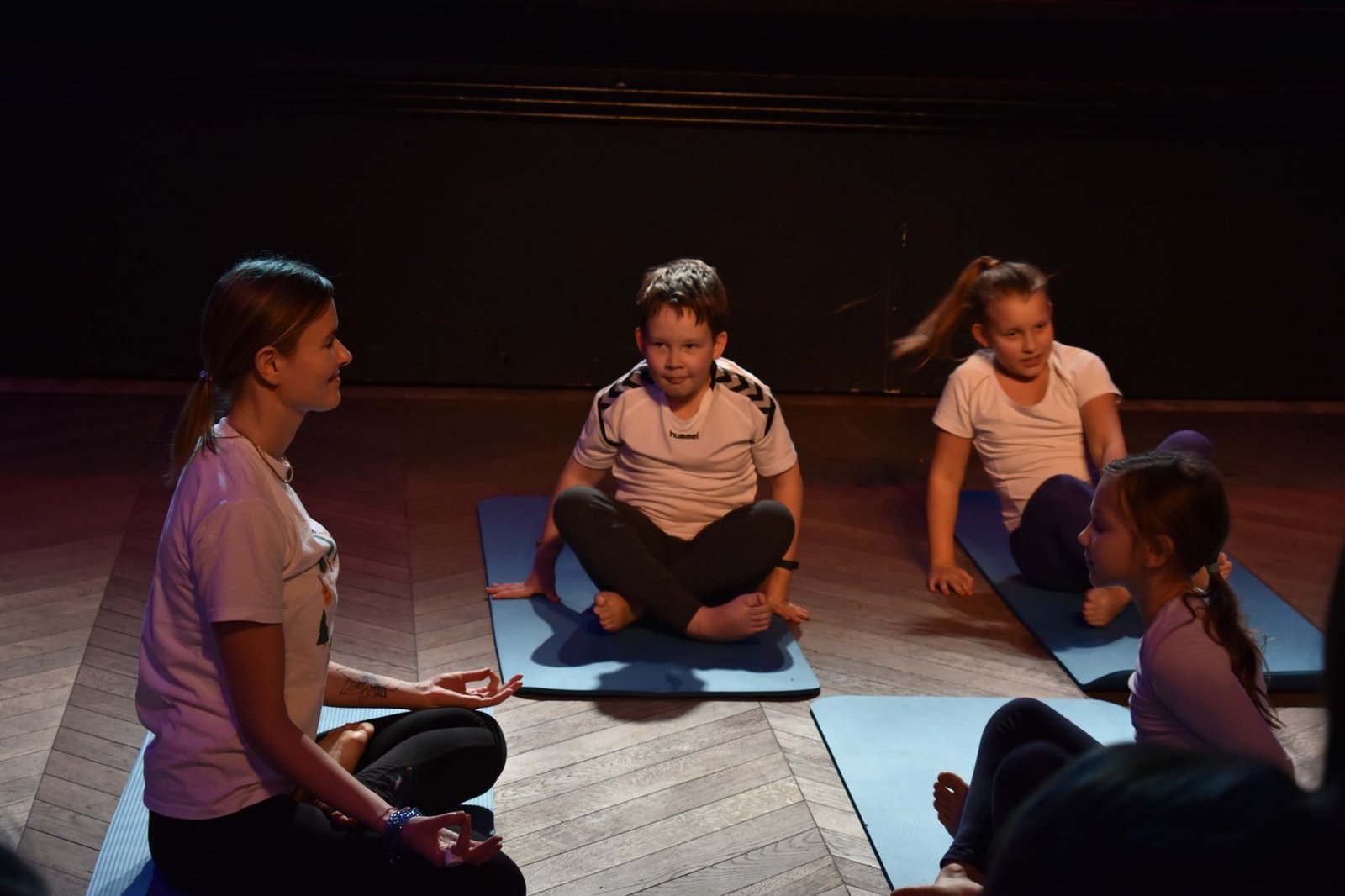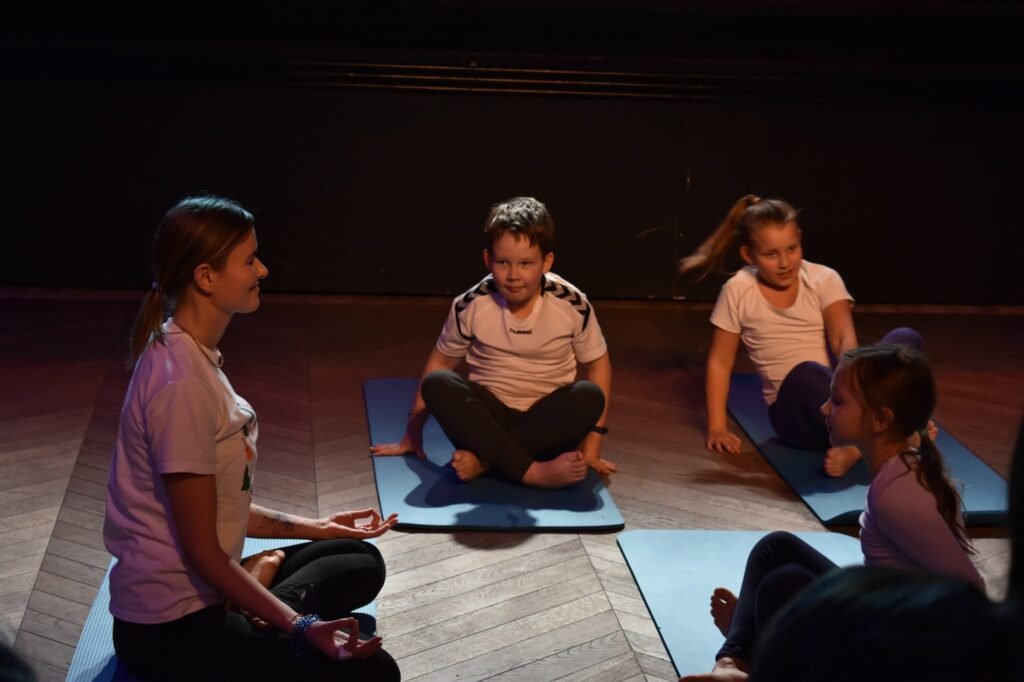
Yoga for children is a form of modern yoga designed for children. It includes poses to increase strength, flexibility, and coordination. Classes are intended to be fun and may include age-appropriate games, animal sounds and creative names for poses.
Yoga practice benefits for children
- Improves posture, flexibility, strength, balance, coordination and motor skills.
- Helps children recognise and honour all emotions, learning to trust their instincts.
- Teaches breathing techniques that increase energy and decrease anxiety providing effective coping strategies for stress.

According to Jacobsen, “Yoga has five principal meanings:
- Yoga as a disciplined method for attaining a goal;
- Yoga as techniques of controlling the body and the mind;
- Yoga as a name of one of the schools or systems of philosophy (darśana);
- Yoga in connection with other words, such as “hatha-, mantra-, and laya-,” referring to traditions specialising in particular techniques of yoga;
Schedule and preparation for class
Yoga came to the attention of an educated western public in the mid-19th century along with other topics of Indian philosophy. In the context of this budding interest, N. C. Paul published his Treatise on Yoga Philosophy in 1851.
The first Hindu teacher to actively advocate and disseminate aspects of yoga to a western audience, Swami Vivekananda, toured Europe and the United States in the 1890s. The reception which Swami Vivekananda received built on the active interest of intellectuals, in particular the New England Transcendentalists, among them R. W. Emerson.

